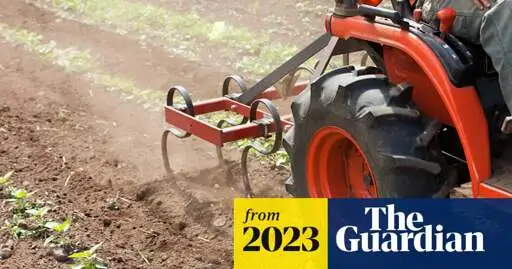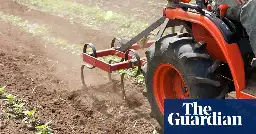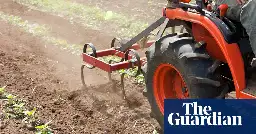Improving soil could keep world within 1.5C heating target, research suggests
Improving soil could keep world within 1.5C heating target, research suggests

Improving soil could keep world within 1.5C heating target, research suggests

Marginal improvements to agricultural soils around the world would store enough carbon to keep the world within 1.5C of global heating, new research suggests.
Farming techniques that improve long-term fertility and yields can also help to store more carbon in soils but are often ignored in favour of intensive techniques using large amounts of artificial fertiliser, much of it wasted, that can increase greenhouse gas emissions.
Using better farming techniques to store 1% more carbon in about half of the world’s agricultural soils would be enough to absorb about 31 gigatonnes of carbon dioxide a year, according to new data. That amount is not far off the 32 gigatonnes gap between current planned emissions reduction globally per year and the amount of carbon that must be cut by 2030 to stay within 1.5C.
The estimates were carried out by Jacqueline McGlade, the former chief scientist at the UN environment programme and former executive director of the European Environment Agency. She found that storing more carbon in the top 30cm of agricultural soils would be feasible in many regions where soils are currently degraded.
McGlade now leads a commercial organisation that sells soil data to farmers. Downforce Technologies uses publicly available global data, satellite images and lidar to assess in detail how much carbon is stored in soils, which can now be done down to the level of individual fields.
“Outside the farming sector, people do not understand how important soils are to the climate,” said McGlade. “Changing farming could make soils carbon negative, making them absorb carbon, and reducing the cost of farming.”
She said farmers could face a short-term cost while they changed their methods, away from the overuse of artificial fertiliser, but after a transition period of two to three years their yields would improve and their soils would be much healthier.
She estimated it would cost about $1m (£790,000) to restore 40,000 hectares (99,000 acres) of what is currently badly degraded farmland in Kenya, an area that is home to about 300,000 people.
Downforce data could also allow farmers to sell carbon credits based on how much additional carbon dioxide their fields are absorbing. Soil has long been known to be one of Earth’s biggest stores of carbon, but until now it has not been possible to examine in detail how much carbon soils in particular areas are locking up and how much they are emitting. About 40% of the world’s farmland is now degraded, according to UN estimates.
Carbon dioxide removal, the name given to a suite of technologies and techniques that increase the uptake of carbon dioxide from the air and sequester the carbon in some form, is an increasing area of interest, as the world slips closer to the critical threshold of 1.5C of global heating above pre-industrial levels.
Arable farmers could sequester more carbon within their soils by changing their crop rotation, planting cover crops such as clover, or using direct drilling, which allows crops to be planted without the need for ploughing. Livestock farmers could improve their soils by growing more native grasses.
Hedgerows also help to sequester carbon in the soil, because they have large underground networks of mycorrhizal fungi and microbes that can extend metres into the field. Farmers have spent decades removing hedgerows to make intensive farming easier, but restoring them, and maintaining existing hedgerows, would improve biodiversity, reduce the erosion of topsoil, and help to stop harmful agricultural runoff, which is a key polluter of rivers.


